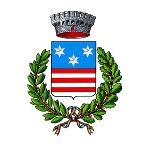Convento dei Padri Cappuccini
Ultimo aggiornamento: 17 ottobre 2024, 09:50
Le prime notizie sul convento del Padri Cappuccini di Geraci sono state riportate da Padre Andrea da Paternò cappuccino di Messina già dal 1780. Nel 1680 il Marchese di Geraci chiede al Papa Innocenzo X il permesso di costruire il Convento, ma invano. Il Marchese insiste e si reca a Roma. Il Pontefice commosso da tanta insistenza e devozione da il desiderato consenso nel 1689. La Santa Sede scelse oltre ai religiosi in numero di 27 anche il luogo ove ubicarlo. Il 3 marzo del 1689 si pose la prima pietra. I religiosi vissero soprattutto di lavoro della terra e di carità. L’edificio si svolge a ferro di cavallo con a centro un spazioso cortile. A sinistra c’è la chiesa settecentesca, dove è possibile intravedere ancora piccole parti di fini stucchi, a destra il refettorio con alle pareti due affreschi settecenteschi raffiguranti l’Ultima Cena e la Crocifissione. Al piano superiore una miriade di piccole celle servivano da dormitorio ai religiosi. Nel 1866 per la soppressione degli ordini religiosi il convento fu chiuso e la proprietà viene trasferita al Comune. Oggi la struttura è stata restaurata e riportata all’antico splendore. Anche gli affreschi sono stati recuperati.
**************************
Convent of the capuchin fathers
The first news about the convent of the Capuchin Fathers of Geraci was reported by Father Andrea da Paternò Capuchin of Messina as early as 1780. In 1680 the Marquis of Geraci asked Pope Innocent X for permission to build the Convent, but in vain. The Marquis insisted and went to Rome. The Pontiff moved by such insistence and devotion gave the desired consent in 1689. The Holy See chose not only the religious in number of 27 but also the place where to locate it. On March 3, 1689, the foundation stone was laid. The religious lived mainly by land work and charity. The building unfolds in a horseshoe shape with a spacious courtyard in the center. To the left is the 18th-century church, where small parts of fine stucco can still be glimpsed; to the right is the refectory with two 18th-century frescoes on the walls depicting the Last Supper and the Crucifixion. On the upper floor a myriad of small cells served as dormitories for the religious. In 1866 due to the suppression of religious orders, the convent was closed and the property was transferred to the municipality. Today the structure has been restored to its former glory. The frescoes have also been recovered.

